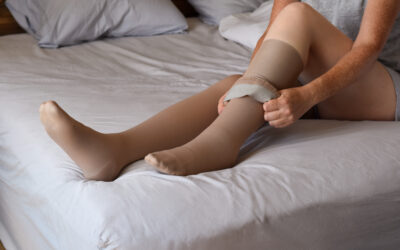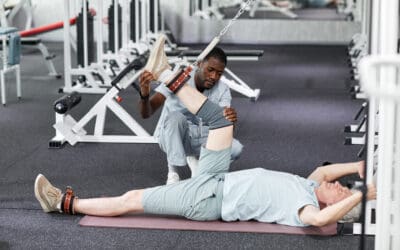Stroke and neurological disorders present multifaceted challenges that extend beyond immediate physical impairments. These conditions can disrupt the very essence of daily living, affecting emotional health, cognitive function, and social interactions. Understanding the depth and breadth of these impacts is crucial for developing effective rehabilitation strategies.
Strokes, depending on their type (ischemic or hemorrhagic), location, and severity, can result in a wide range of outcomes, from mild weakness to complete paralysis of one side of the body. The cognitive and emotional aftermath, such as depression, anxiety, and post-stroke cognitive decline, also needs targeted intervention.
Neurological disorders, including Parkinson’s disease, multiple sclerosis, and amyotrophic lateral sclerosis (ALS), amongst others, can lead to progressive deterioration of motor functions, speech difficulties, and cognitive decline. Each disorder presents its unique set of challenges, necessitating personalized care plans.
Is there any way to prevent a stroke?
Preventing strokes and reducing the risk of neurological disorders involves a combination of lifestyle changes, medical management, and awareness. Here are key strategies:
- Maintain a Healthy Diet: Opt for a balanced diet rich in fruits, vegetables, whole grains, and lean proteins. Limit intake of saturated fats, cholesterol, and sugars to help manage blood pressure and cholesterol levels.
- Regular Physical Activity: Engage in moderate-intensity exercise for at least 150 minutes per week. Activities like walking, swimming, or cycling can help maintain a healthy weight and reduce the risk of stroke.
- Control Blood Pressure: High blood pressure is a significant risk factor for stroke. Regular monitoring and management through diet, exercise, and medication (if prescribed) are crucial.
- Limit Alcohol Consumption: Excessive alcohol intake can increase blood pressure. Moderation is key, and guidelines suggest no more than one drink a day for women and two for men.
- Quit Smoking: Smoking accelerates clot formation by thickening your blood, and increases plaque buildup in arteries. Quitting smoking can significantly reduce the risk of stroke.
- Manage Diabetes: Keep your blood sugar levels under control through diet, exercise, and medication as recommended by your healthcare provider.
- Monitor Cholesterol Levels: High cholesterol can lead to the buildup of plaques in arteries, increasing the risk of stroke. A healthy diet, exercise, and medication can help manage cholesterol levels.
- Seek Regular Medical Checkups: Regular check-ups can help identify and manage risk factors like high blood pressure, high cholesterol, and diabetes early on.
Rehabilitation: A Multi-Disciplinary Approach
Effective rehabilitation for stroke and neurological disorder patients is inherently multi-disciplinary. It involves a team of professionals – physical therapists, occupational therapists, speech and language therapists, neurologists, and psychologists – all working in concert to tailor a comprehensive care plan that addresses the spectrum of needs.
-
Physical Therapy: Central to recovery, physical therapy focuses on rebuilding strength, coordination, and balance. Techniques such as neuromuscular reeducation, gait training, and resistance exercises play pivotal roles in regaining motor functions and independence.
-
Occupational Therapy: This therapy is vital for reintegrating individuals into daily activities and work, emphasizing fine motor skills, cognitive processing, and adaptive strategies for performing daily tasks, thus fostering independence and self-reliance.
-
Speech and Language Therapy: For those affected by speech and swallowing difficulties post-stroke or due to neurological conditions, speech therapy offers strategies and exercises to improve communication abilities and swallow function, enhancing quality of life and social interactions.
-
Cognitive Rehabilitation: Cognitive impairment is a common consequence of strokes and neurological disorders. Cognitive rehabilitation focuses on enhancing memory, attention, problem-solving skills, and executive functions, employing strategies that adapt to each individual’s specific challenges.
-
Psychological Support: The journey of recovery is not just physical but emotional. Counseling and support groups can provide essential emotional support, coping strategies, and a community of understanding, helping individuals and their families navigate the complexities of recovery.
The Path Forward
Rehabilitation and physical therapy for stroke and neurological disorders are not one-size-fits-all. The road to recovery is personal, dynamic, and evolves as individuals make progress, face setbacks, and adapt to new challenges. The goal of rehabilitation is not just to restore function but to empower individuals to lead fulfilling lives, despite the challenges posed by their conditions.
Advances in rehabilitation sciences, technology, and therapeutic approaches continue to push the boundaries of what is possible, offering hope and tangible improvements in the lives of those affected by stroke and neurological disorders. The commitment to rehabilitation is a commitment to rediscovering strength, capability, and the joy of living amidst adversity.
Frequently Asked Questions (FAQ)
Q: Can strokes and neurological disorders be completely prevented?
A: While not all strokes and neurological disorders can be prevented, many risk factors can be managed through lifestyle changes and medical treatment, significantly reducing the risk.
Q: How does physical activity benefit neurological health?
A: Regular physical activity improves blood flow to the brain, helps maintain healthy weight, reduces inflammation, and can improve the health of blood vessels, all of which can reduce the risk of stroke and improve neurological function.
Q: Are there any warning signs of stroke I should be aware of?
A: Yes, the acronym FAST is used to remember the warning signs: Face drooping, Arm weakness, Speech difficulties, Time to call emergency services. Immediate medical attention can make a critical difference in recovery.
Q: Can diet really affect my risk of neurological disorders?
A: Yes, a diet high in antioxidants, healthy fats, and low in processed foods can reduce inflammation and oxidative stress, which are linked to the development of neurological disorders.
Q: Is it too late to make lifestyle changes if I already have a neurological disorder?
A: It’s never too late. While lifestyle changes may not cure existing conditions, they can help manage symptoms, reduce the progression of the disease, and improve quality of life.


